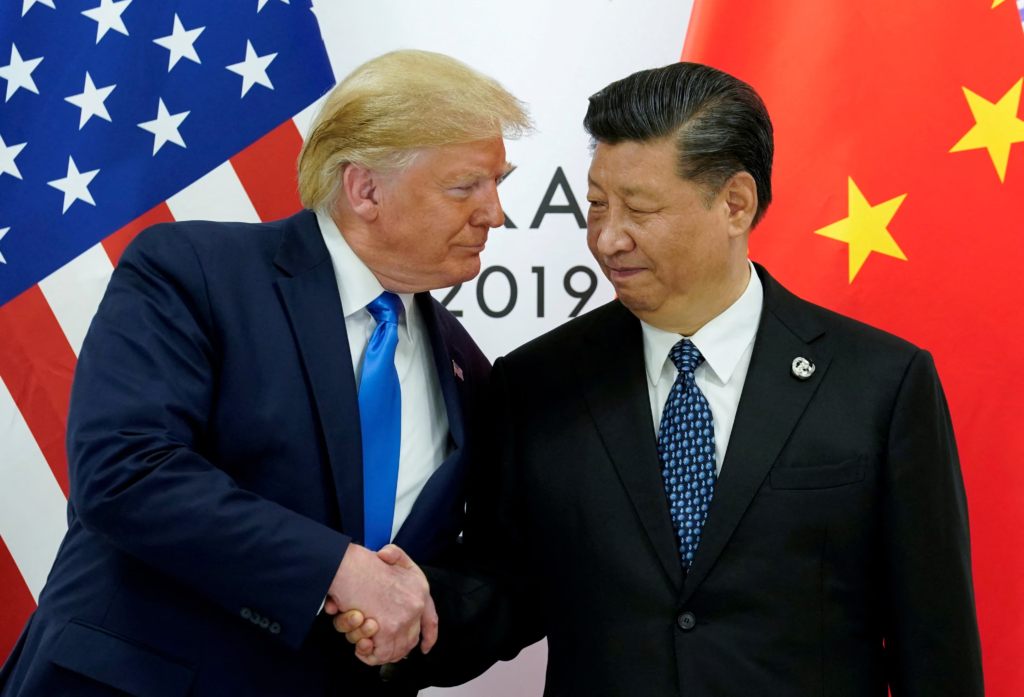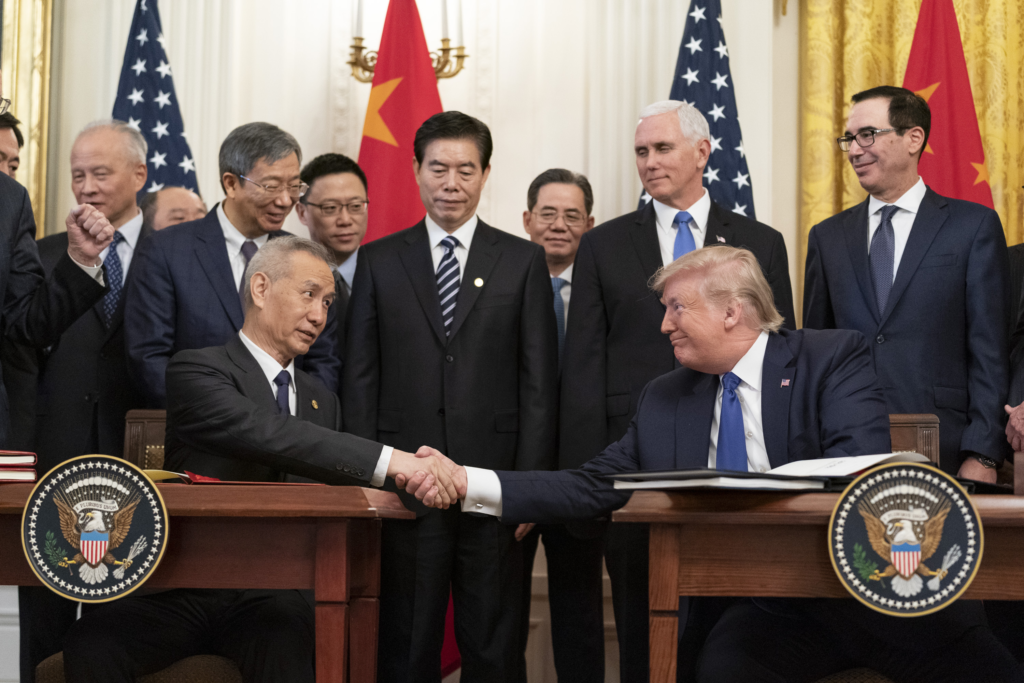Trump vs China: The Trade War is Back
The U.S.-China trade war reignited after Trump’s second term began on January 20, 2025. The conflict builds on tensions from Trump’s first term and issues unresolved during Biden’s presidency.

Trump sees China’s $1 trillion trade surplus with the U.S. as unfair. He accuses China of intellectual property theft, currency manipulation, and overproduction. In April 2025, Trump escalated the trade war with new tariffs for both economic and political goals.
Initial Moves (February-March 2025)
Trump imposed a 10% tariff on Chinese imports on February 4. He blamed China for failing to control fentanyl precursor exports. By March, he raised tariffs to 20%. Steel and aluminum imports faced an additional 25%. Canada and Mexico negotiated pauses, but China did not.
Escalation (April 2025)
On April 2, Trump signed an executive order for a 10% tariff on all U.S. imports. Chinese goods faced an additional 34%, raising the total to 54%. On April 7, he threatened another 50%. This could raise tariffs on Chinese goods to 104%. Trump uses these measures to increase pressure on China.
Trump’s Motivations
Trump wants to protect U.S. industries from cheap Chinese goods. He aims to shield American firms from China’s overcapacity.

Trump links tariffs to China’s role in opioid trafficking. He claims China fails to control chemical exports.
With Republican support, Trump uses tariffs as negotiation tools. He hopes China will concede to avoid economic damage.Trump wants to weaken the U.S. dollar to boost exports. His advisors propose tariffs to reach this goal.
What’s Happened So Far
U.S. Actions
By April 8, tariffs on Chinese goods increased from 20% in March to 54% in April. Trump closed duty-free loopholes for low-value Chinese packages. He threatened a 74% tariff if China retaliated.
China’s Response
On March 4, China imposed a 15% tariff on U.S. farm goods. Other U.S. imports faced 10%. On April 4, China raised tariffs to 34% on all U.S. goods. It banned rare earth exports to the U.S. It also sanctioned over 30 U.S. firms. China’s Commerce Ministry called Trump’s actions “blackmail.”
Global Fallout
Stock markets dropped sharply. The Nasdaq entered bear territory on April 4. Recession fears grew worldwide. Allies like Canada and the EU retaliated. Trump’s strategy became more difficult.
China’s Economy: Current State and Vulnerabilities
China targets 5% GDP growth for 2025. Exports make up 20% of its GDP. It leads in rare earth production and has diversified trade partners.
China exports $450 billion in goods to the U.S. annually. Foreign investment is declining. Factory prices are falling. A property crisis remains unsolved. The yuan hit a seven-week low in April 2025
Impact of Trump’s Tariffs
Tariffs could reduce U.S. demand for Chinese goods. Experts expect a 2-3% GDP drop. Manufacturing hubs may lose millions of jobs.
Companies are shifting production out of China. Vietnam and India could benefit. China’s overcapacity limits quick shifts.
Tariffs may raise U.S. household costs by $1,000-$1,900 a year. China faces deflation risks from unsold goods.
A weaker yuan helps exporters. But it risks capital flight. The U.S. may accuse China of currency manipulation.
How China’s Economy Might Fight Back
China’s 34% tariffs target U.S. farmers. It is buying from Brazil instead. Rare earth bans affect U.S. tech and defense sectors. China sanctioned 30+ U.S. companies and is investigating Google.
Read this:
China plans stimulus measures. These include tax cuts, infrastructure projects, and cash handouts. It is investing in domestic production and tech innovation.
China is strengthening trade ties with Asia, Africa, and Europe. It is using its Belt and Road Initiative to expand markets. U.S. agricultural losses open new supplier options.
China filed a WTO case against the U.S. tariffs in April. It canceled talks after Trump’s 50% threat. But China may still offer concessions on fentanyl for tariff relief.
Will China Succeed?
China’s economy will hurt but is unlikely to collapse. A 2-3% GDP drop is manageable with stimulus. China’s government controls the economy more than democratic countries.
But prolonged tariffs may cause job losses and unrest. This could challenge the Communist Party’s rule. Trump bets China will give in first. China insists it will “fight to the end.” A deeper trade war is possible if both sides stay firm.


 Why Trump Is Taking Action Against China’s Graphite Dominance
Why Trump Is Taking Action Against China’s Graphite Dominance  Trump Declares Massive Trade Deal with Japan, Sets 15% Tariff
Trump Declares Massive Trade Deal with Japan, Sets 15% Tariff  China Unveils World’s Lightest Brain Chip to Control Bees
China Unveils World’s Lightest Brain Chip to Control Bees  Trump Slaps Tariffs on Asian Nations, but India Secures Exemption
Trump Slaps Tariffs on Asian Nations, but India Secures Exemption  Netanyahu Meets Trump, Nominates Him for Nobel Peace Prize
Netanyahu Meets Trump, Nominates Him for Nobel Peace Prize  Why the World Might See Two Dalai Lamas Soon
Why the World Might See Two Dalai Lamas Soon